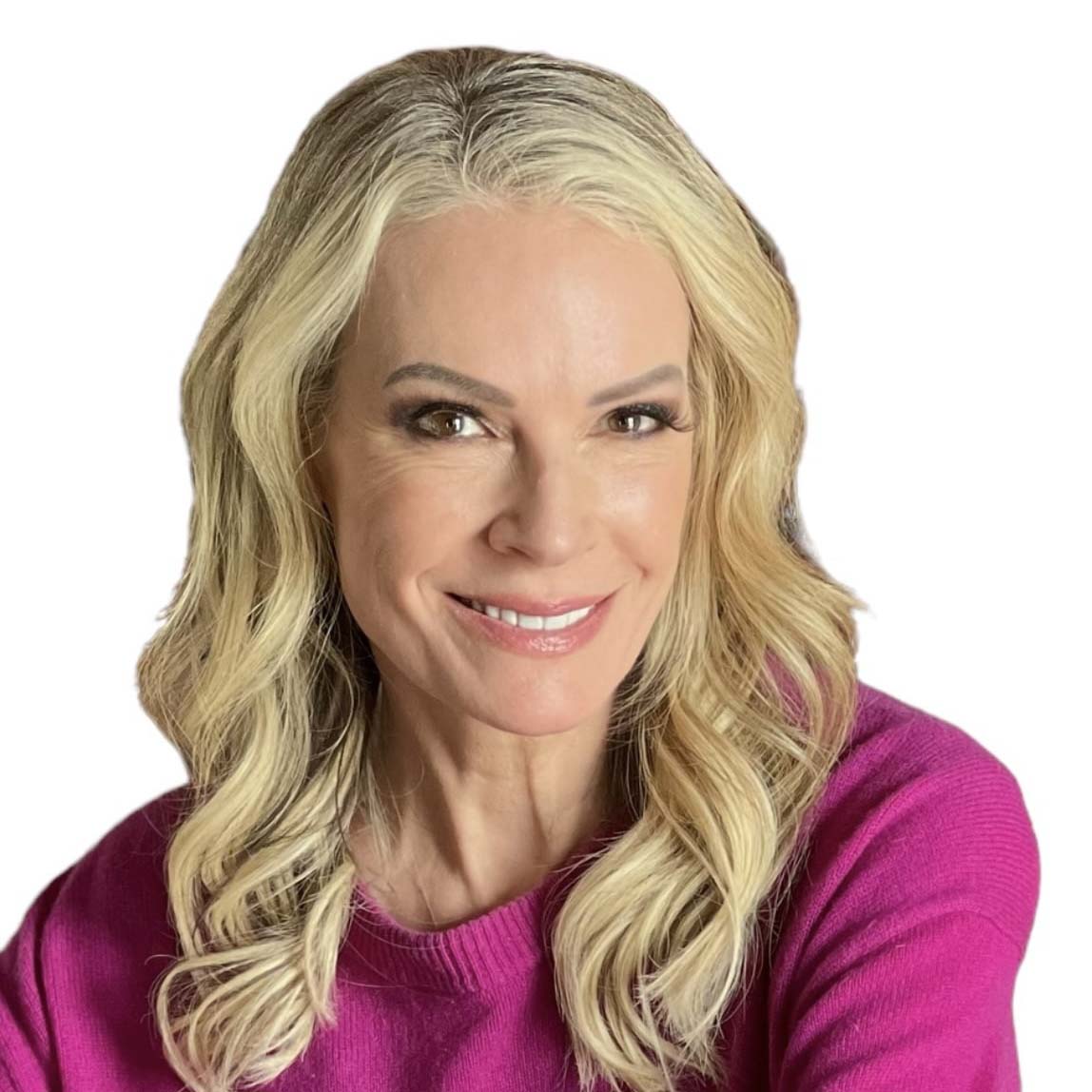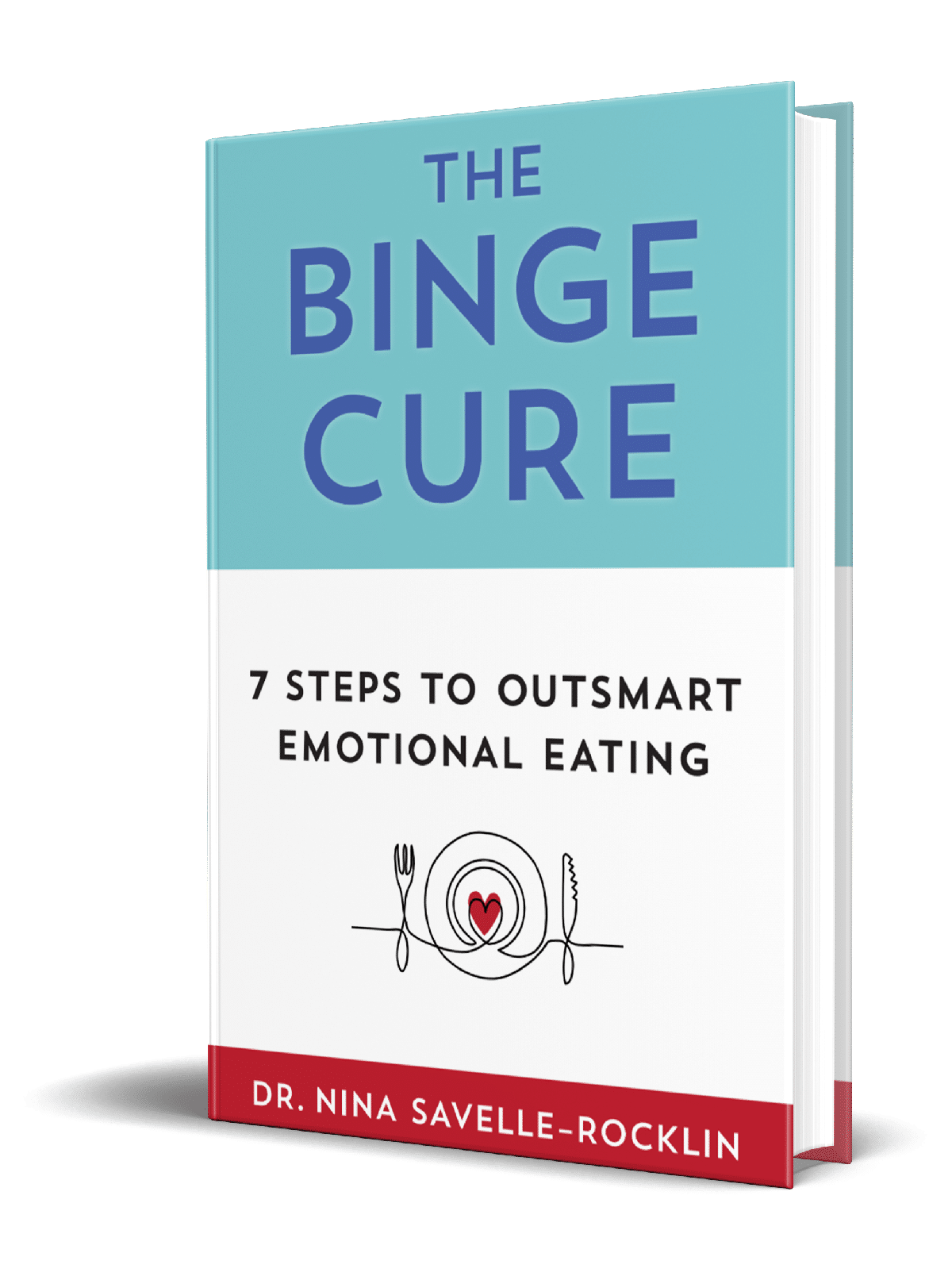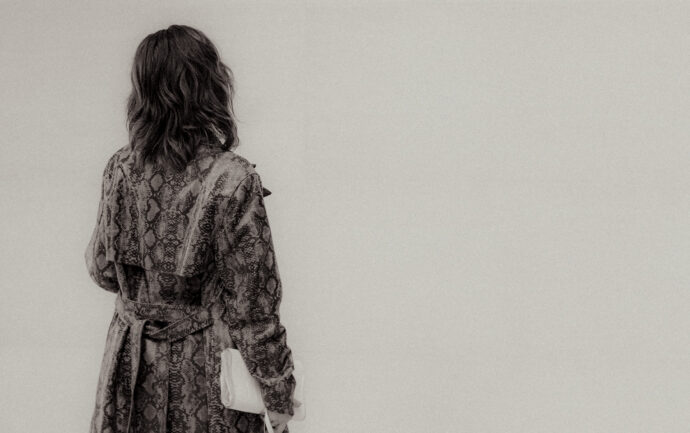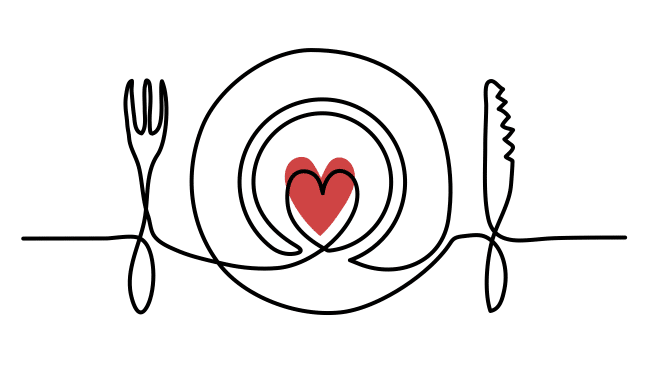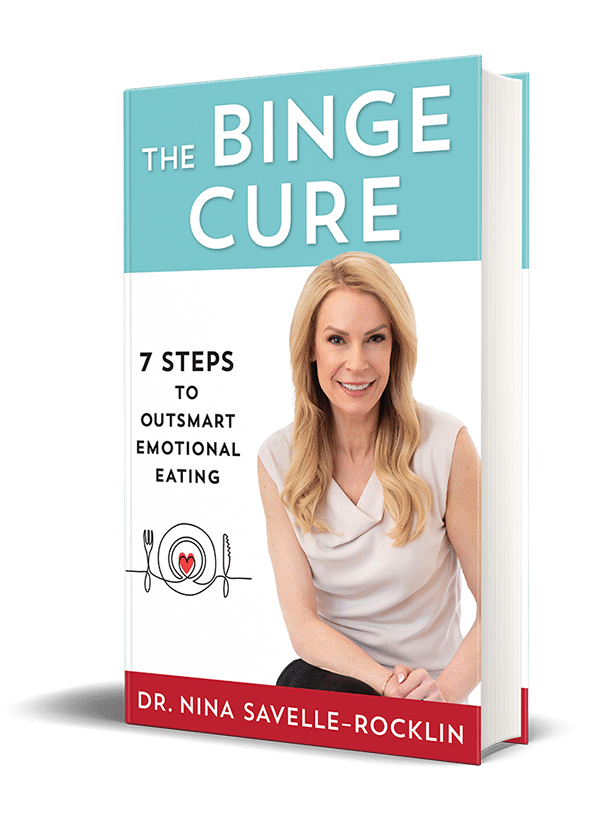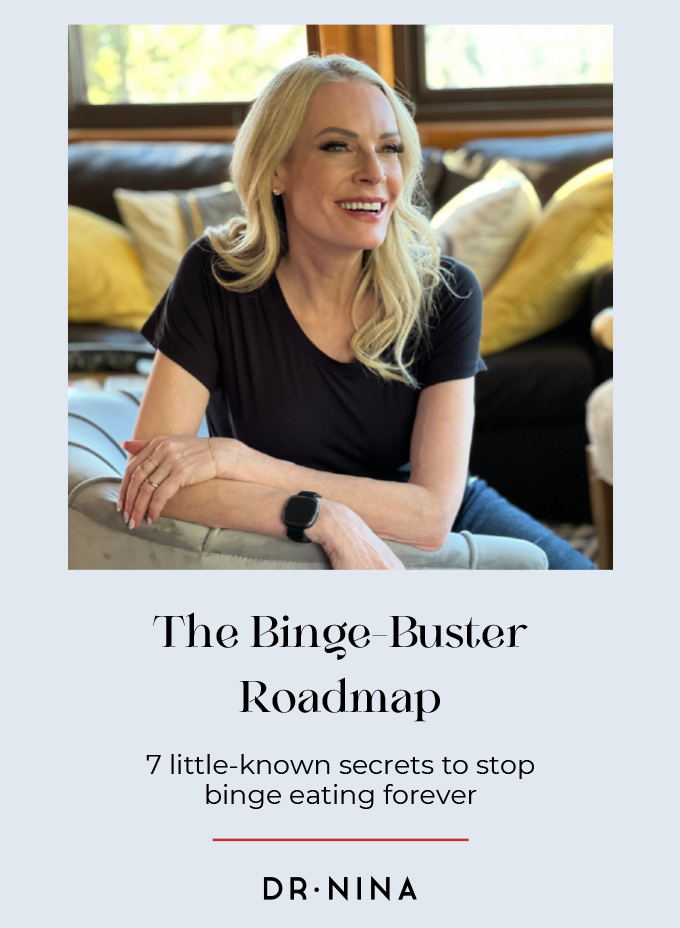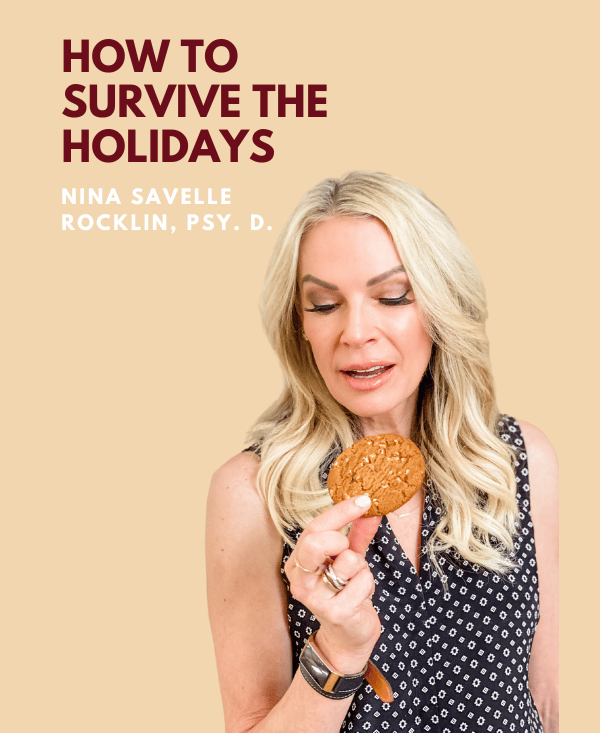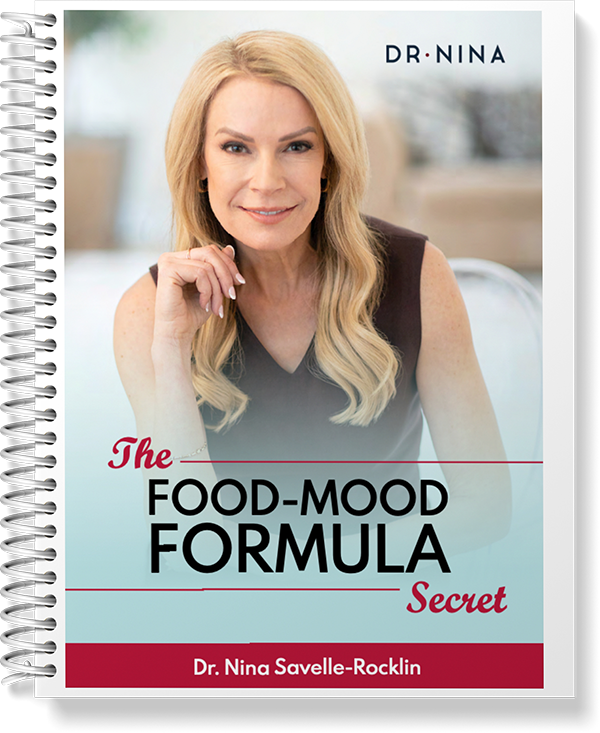Dr. Nina Savelle-Rocklin
The Most Common Eating Disorder (And Why You Might Not Know You Have It)

Table of Contents
- Why We Eat When We’re Not Hungry
- The Problem With Willpower
- Tip #1: Pause and Check In With Your Feelings
- Tip #2: Feel Your Emotions Fully Don’t Shut Them Off
- The Beginning of Change
- Conclusion
- Frequently Asked Questions:
When people think of eating disorders, they often imagine anorexia or bulimia extreme behaviors that seem visibly obvious. But the truth is, the most common eating disorder isn’t either of those.
It’s binge eating disorder.
And most people who struggle with it don’t even realize they’re dealing with an eating disorder at all.
They just think they’re out of control around food.
Or that they have no willpower.
Or that they just need to try harder.
But here’s the truth: willpower isn’t your problem.
If you find yourself standing in front of the pantry without even remembering how you got there…
If you eat when you’re not physically hungry…
If you feel guilty or ashamed after eating certain foods, but can’t seem to stop…
It’s not a character flaw.
It’s not weakness.
And it’s definitely not a lack of discipline.
Binge eating and emotional eating are often signs that something deeper is going on. They are coping strategies. Your mind’s way of trying to soothe pain, avoid discomfort, or manage stress and emotions you might not even be fully aware of.
Why We Eat When We’re Not Hungry
You might say, “But I wasn’t even that stressed. I was just craving something salty,” or “I don’t even know what I was feeling I just had the urge to eat.”
That’s the thing: these urges often operate outside of conscious awareness. You don’t always feel sad, lonely, angry, or overwhelmed in the moment. But that doesn’t mean those emotions aren’t there.
Binge eating is not about food.
It’s about what the food is doing for you.
It might be distracting you from a thought you don’t want to think.
It might be comforting when you’re lonely.
It might be calming you down when you’re anxious or wired.
It might be helping you express frustration you don’t feel allowed to show.
Food becomes the solution not the problem.
The Problem With Willpower
When you try to “fix” binge eating with more willpower, you’re missing the point. Willpower can only get you so far. If you’re using food to cope with an emotional wound, trying to “be stronger” doesn’t address what’s really going on.
You don’t need more rules or more discipline.
You need more understanding.
That’s why I always say: it’s not about willpower it’s about “WHY-power.”
When you understand why you’re turning to food, you gain real power. You shift from reacting to responding.
So how do you start building that awareness?
Here are two simple but powerful ways to begin.
Tip #1: Pause and Check In With Your Feelings
Before you eat, especially if you’re not physically hungry, stop and ask yourself:
- Am I feeling angry?
- Am I sad or lonely?
- Am I anxious or scared?
- Am I stressed, overwhelmed, or ashamed?
Try to name the exact emotion behind the craving. The more specific you are, the more empowered you’ll be. Saying “I feel bad” isn’t the same as saying “I feel rejected” or “I feel helpless.”
This might feel uncomfortable at first. You may not be used to checking in with your emotions especially in the moments when you're reaching for food. But with practice, this becomes easier.
And it’s essential.
Because once you know what’s really going on, you can start to address the root cause not just the symptom.
Food cravings are messengers.
They’re pointing you toward something that needs attention.
Tip #2: Feel Your Emotions Fully Don’t Shut Them Off
Most of us have been taught to avoid, minimize, or push through uncomfortable feelings. We tell ourselves, “Don’t cry,” “Get over it,” or “Keep it together.” And when we can’t? We eat.
But emotions don’t disappear just because we ignore them. In fact, the more we suppress them, the more they tend to show up in other ways like bingeing.
The only way to get through emotions is to feel them.
If you’re sad, let yourself cry. If you’re angry, express it safely and appropriately. Journal, scream into a pillow, talk to someone who will listen without judgment.
If you’re scared, acknowledge your fear. Name it. Explore it.
This isn’t about wallowing or spiraling it’s about making space for the truth of what you feel.
And the more you allow yourself to feel your emotions, the less power they hold over you. When you process your feelings directly, you don’t need food to do it for you.
One of my clients told me, “I didn’t even realize how often I used food to shut down sadness. I thought I just loved chocolate. But once I let myself feel, I didn’t need the chocolate as much.”
That’s the shift.
For strategies on how to handle those cravings, watch this:
The Beginning of Change
If you’ve struggled with binge eating for years, please know: this is not about “just stopping.” And it’s not about cutting out sugar or following another diet plan.
This is about healing.
Healing your relationship with food starts by understanding your relationship with yourself your emotions, your needs, and the parts of you that haven’t had a voice.
If you’ve been stuck for years, you may feel like nothing will ever change. But emotional eating is not a life sentence it’s a pattern. And patterns can be understood, interrupted, and transformed.
This is not about cutting out carbs or counting points. It’s not about being “good” or “bad” with food.
It’s about building a new relationship with food, yes but more importantly, with yourself.
A relationship rooted in awareness, compassion, and emotional honesty.
So the next time you feel the urge to binge or to eat when you’re not hungry, try this:
Pause.
Check in with your feelings.
Ask yourself, What am I really hungry for?
Conclusion
When you stop focusing on what you’re eating and start listening to what’s eating at you, everything changes. That’s where healing begins.
You don’t need more control around food – you need more connection with yourself. When you listen to your emotions instead of avoiding them, bingeing loses its grip. Healing starts not with willpower, but with awareness, compassion, and the courage to feel.And if you want extra support, download my free Emotional Eating Emergency Kit – a powerful resource to help you cope with your feelings in the moment, without turning to food.
Frequently Asked Questions:
What is the most common eating disorder and why don’t most people know they have it?
The most common eating disorder is binge eating disorder. Many people don’t realize they have it because it doesn’t always “look” like an eating disorder. They may think they’re just out of control around food or lacking willpower, when in fact, they’re using food to cope with emotional pain.
What exactly qualifies as a binge?
A binge involves eating a significantly large amount of food in a short period of time—more than most people would eat in similar circumstances—along with a sense of being out of control while eating. It's not just about emotional eating or eating “too much”—it’s about quantity and the emotional experience.
Why do I binge even when I don’t feel upset or stressed?
Bingeing is often driven by emotions that operate outside of conscious awareness. You may not feel obviously sad or anxious, but those emotions might still be present and unrecognized. Food becomes a way to manage or avoid uncomfortable feelings, even if you're not fully aware of them.
Isn’t this just a willpower problem?
No. Bingeing is not caused by a lack of willpower. It's a coping mechanism—your mind’s way of dealing with difficult emotions, unmet needs, or internal conflict. Focusing on discipline misses the point. The real power comes from understanding what’s driving the behavior.
How can I start changing my relationship with food?
Start by shifting your focus from what you’re eating to why you’re eating. Check in with your emotions before eating, especially if you’re not physically hungry. Awareness, not restriction, is the first step to healing.
Sick of obsessing about every bite?
GET THE CURE
The Binge Cure Book!
Enter “CURE” to receive a 20% discount.
No, I don’t want access to this terrific resource to help me overcome binge eating.
The Author
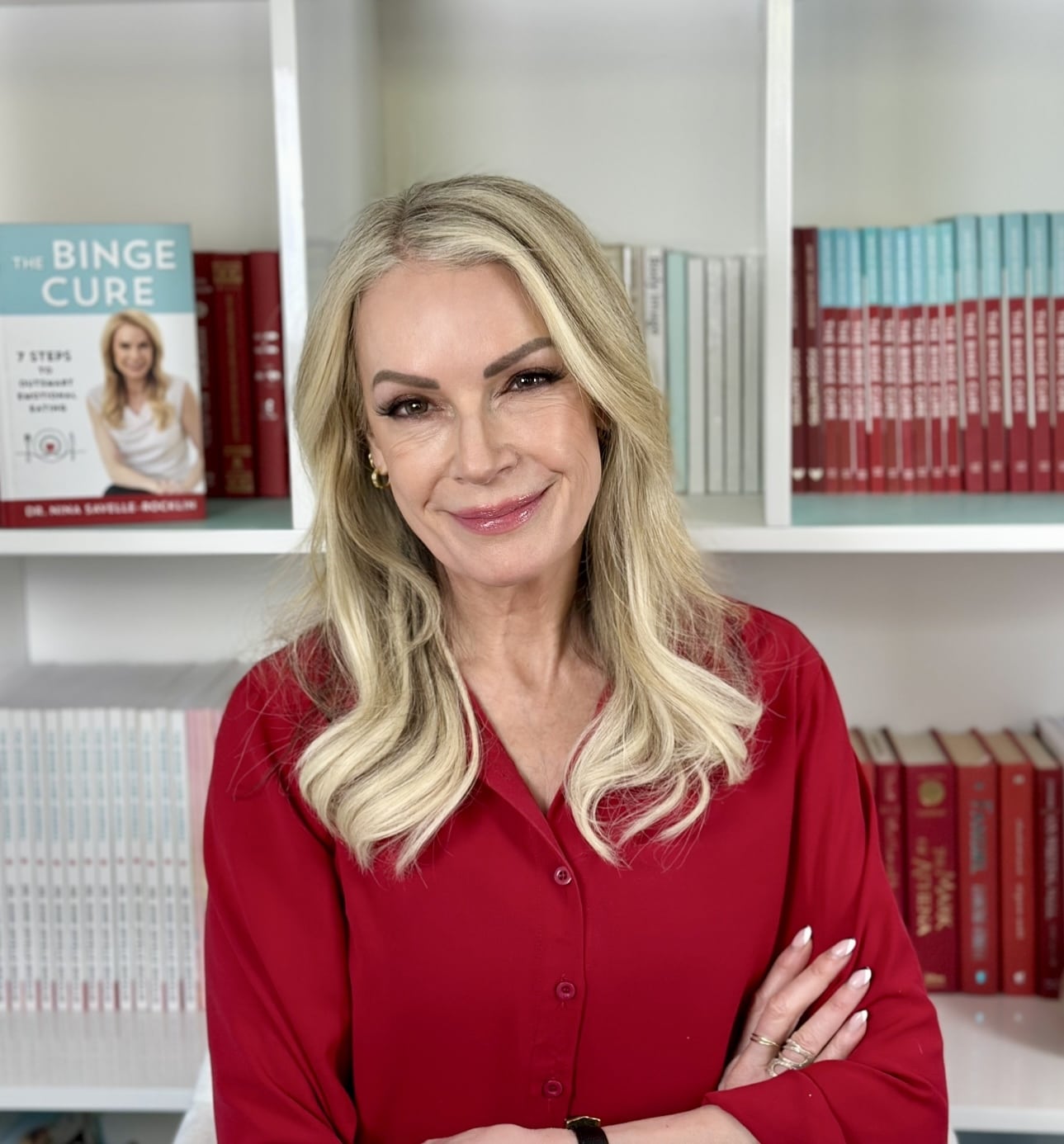
Dr. Nina Savelle-Rocklin is a renowned author and podcast host and one of the nation’s leading psychoanalysts known for the psychology of eating. Her signature message of, “It’s not what you’re eating, it’s what’s eating ‘at’ you” has resonated with hundreds of thousands of listeners from around the globe in 40 countries. As founder of The Binge Cure Method, she guides emotional eaters to create lasting food freedom so they can take back control of their lives and feel good in their bodies.
Related Blogs
